NEW VERSIONS OF MY
FIRST QRP RIG "THE BAREFOOTER"
(1978)
KLIK HIER VOOR DE NEDERLANDSE VERSIE

The two band version of the Barefooter, 40 and 20 meters.
Very minimalistic on bare feet with a very minimalistic transceiver, the portable station on bare feet was a success! Where others did wear thick hiking boots and warm socks, I walked with bare feet without any protection on branches and stones and in the freezing cold snow! To feel where you walk was very challenging and nice. And... on beautiful places in nature, many QSO's could be made with the simple 20 meter CW transceiver and a simple antenna!
New holidays were coming, time to make a new QRP transceiver! This one did not only have 20 meters, but also 40 meters. The 40 meter band was for early in the morning for the shorter distances, the 20 meter band for early in the evening for longer distances. And it had a real Morse key. The supply voltage was increased to 12 volts so that the power was increased from 0.5 watts to just over 1 watt and the transceiver also could be powered with a cable to the tent by the car battery. A disadvantage of 40 meters was that the antenna is much larger and more difficult to hang up. I only had to cut my toenails and the new portable station on bare feet is ready for the holidays!

Portable on bare feet during the midnight sun!
An additional transistor 2N2905 was added in order to reduce the current through the Morse key and so Morse key could be used that was connected to ground. Key clicks are reduced by the capacitor of 10 uF.
At the output of the oscillator, the tuned circuit was replaced by a wide-band coupling with a ferrite core FT37-43.
And the output filter is made switchable to 40 meters and 20 meters. The original filters had to be tuned, but here in the diagram you can find the simple variants.
An extra 1k resistor at the output stage of the transmitter makes it much more stable. Now it does not oscillate anymore with badly tuned antennas.
At the receiver input a 1K potentiometer is placed as a volume control. When you have a lot of BCI or if you have very strong signals, you can decrease the receiver sensitivity a bit and the BCI will disappear quickly.
When switched to 40 meters, an additional capacitor trimmer is connected in parallel to L1a. This core has an adjustable core. Adjust the adjustable core at first at 20 meters, then the trimmer at 40 meters.
An additional low-pass filter was applied after the audio transformer. Therefore, the transformer is reversed for a better impedance matching.
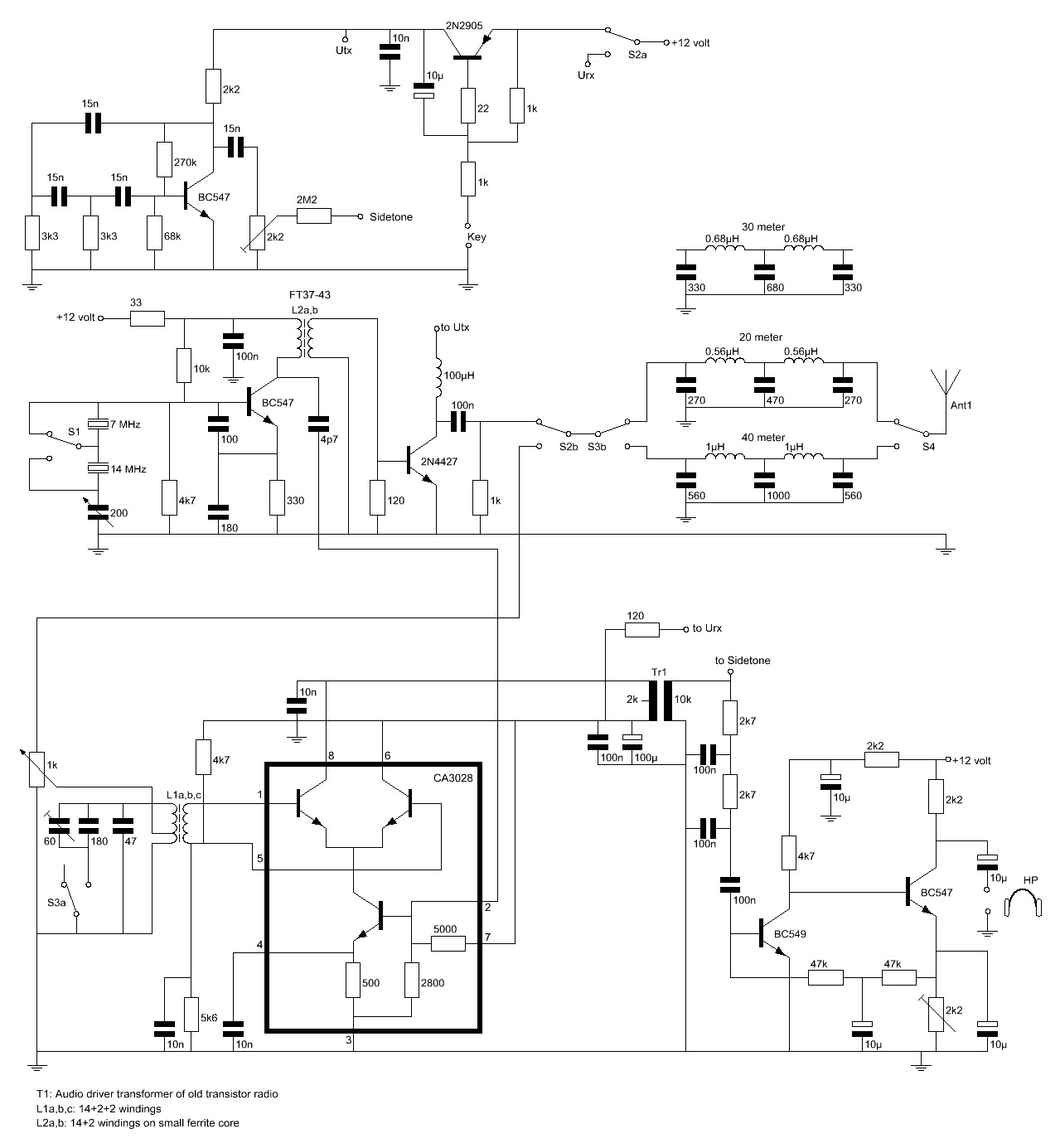
Circuit diagram of the 20 and 40 meter band version
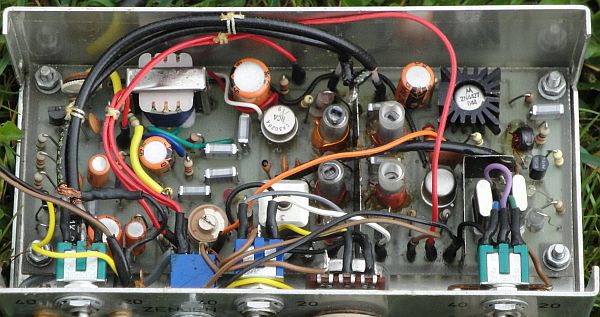
Internal view of the two band version of the Barefooter.
A real PCB was designed for this transceiver with morse key.

For the audio transformer a LT44 can be used.
You can buy it on ebay.
The first time on 40 meters!
It was one year later. The new version of the Barefooter also had 40 meters and RF volume control and a real Morse key.
The first day camping in southern Norway! Did we always have a sked for 20 meter in the evening, for 40 meters we had planned it at 7 o'clock in the morning! The grass was still frozen!
On the top of the hill was a good place to hang up the 40 meter dipole. Not only in the middle, but also the outer ends could be hung up in a tree. The ropes and antenna wires were thrown with stones over the branches in the trees. The antenna did hang excellent at about 5 meters high and with free radiation to the Netherlands. I had to wait until it was seven o'clock, then the sked began. A great report of S9 + 20dB to 30dB! As if I was a QRO station! And also the other station was really S9 +++! Even with the transceiver in transmit mode, I could still hear him very weak! Later I was able to measure that the received signal at the antenna input of the transceiver was approximately -40 dBm! We could make a long QSO without missing a word. And after the sked there was another station calling me. Also very strong. I think that today even a power of 10mW would have been enough, very exceptionally good conditions! Cold bare feet and ice cold toes in the still frozen grass, but in the afternoon it was nice warm summer weather and we were laying in the sun then! The conditions would never be as exceptional good as this time. But many excellent QSO's have been made with the portable station on bare feet on 40 meters on the shorter distances! Also, 30 meters later proved to be an excellent band for shorter and longer distances.
Portable on bare feet on branches and stones in the woods where we normally wear thick walking shoes!
First put down you toes and then your heels, then walking barefoot goes already much better!
30 METER VERSION OF THE BAREFOOTER QRP TRANSCEIVER
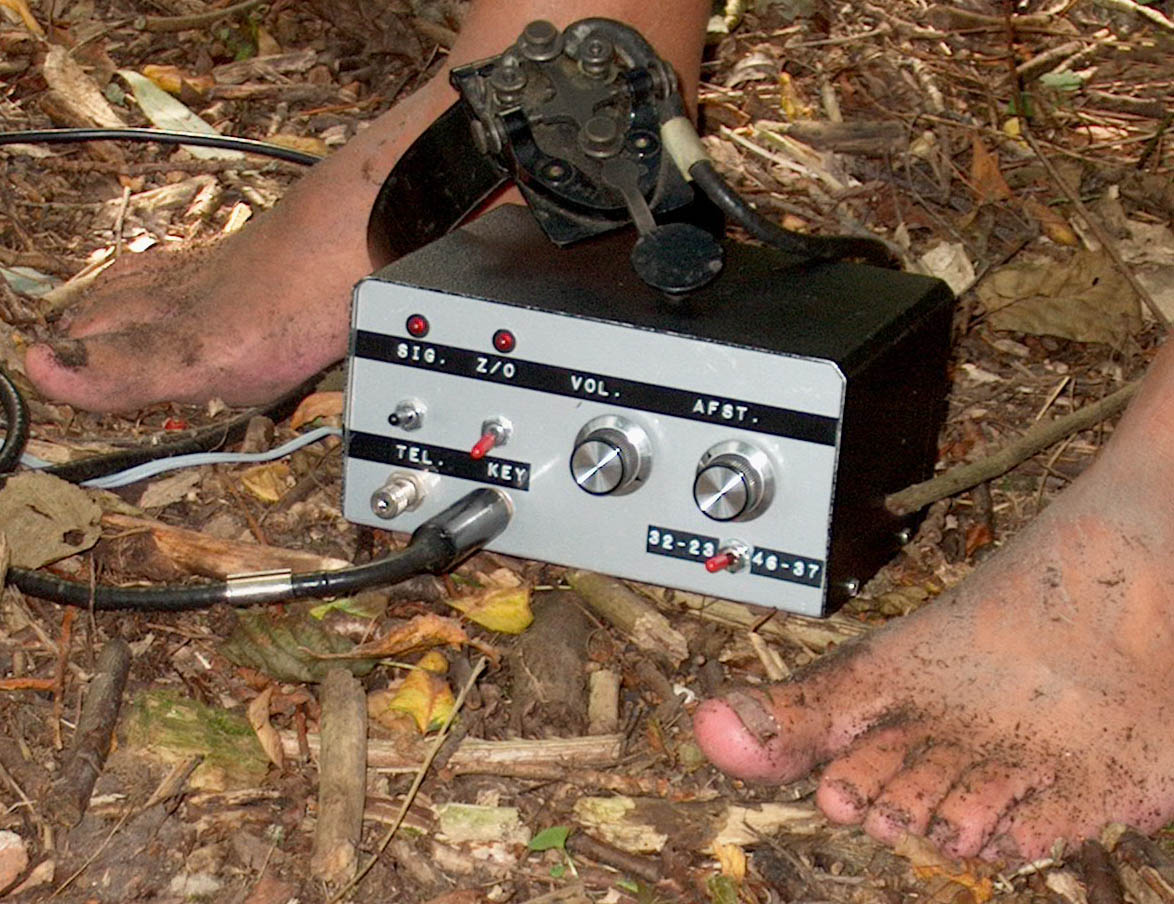
The modified 30 meter version.
It was not overloaded by strong AM stations anymore.
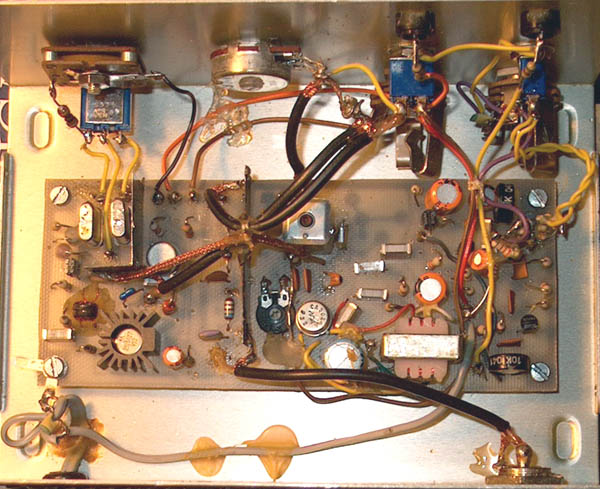
The inside of the modified Barefooter for the 30 meter band.
In the center, the CA3028 in the round metal can. Next to it,
the potentiometer for the adjustment of AM suppression.
Most modifications are not really improvements, but I always like to do some home brewing...
The receiver was very sensitive for strong AM stations like you can find just below the 30 meter band. So the input and output of the CA3028 were balanced and a potentiometer for the fine adjustment was added. The unwanted AM detection was improved with 15 to 20 dB. At first only some strong amateurs could be received in the evening. After the modification, many DX stations could be heard and there was almost no AM detection anymore.
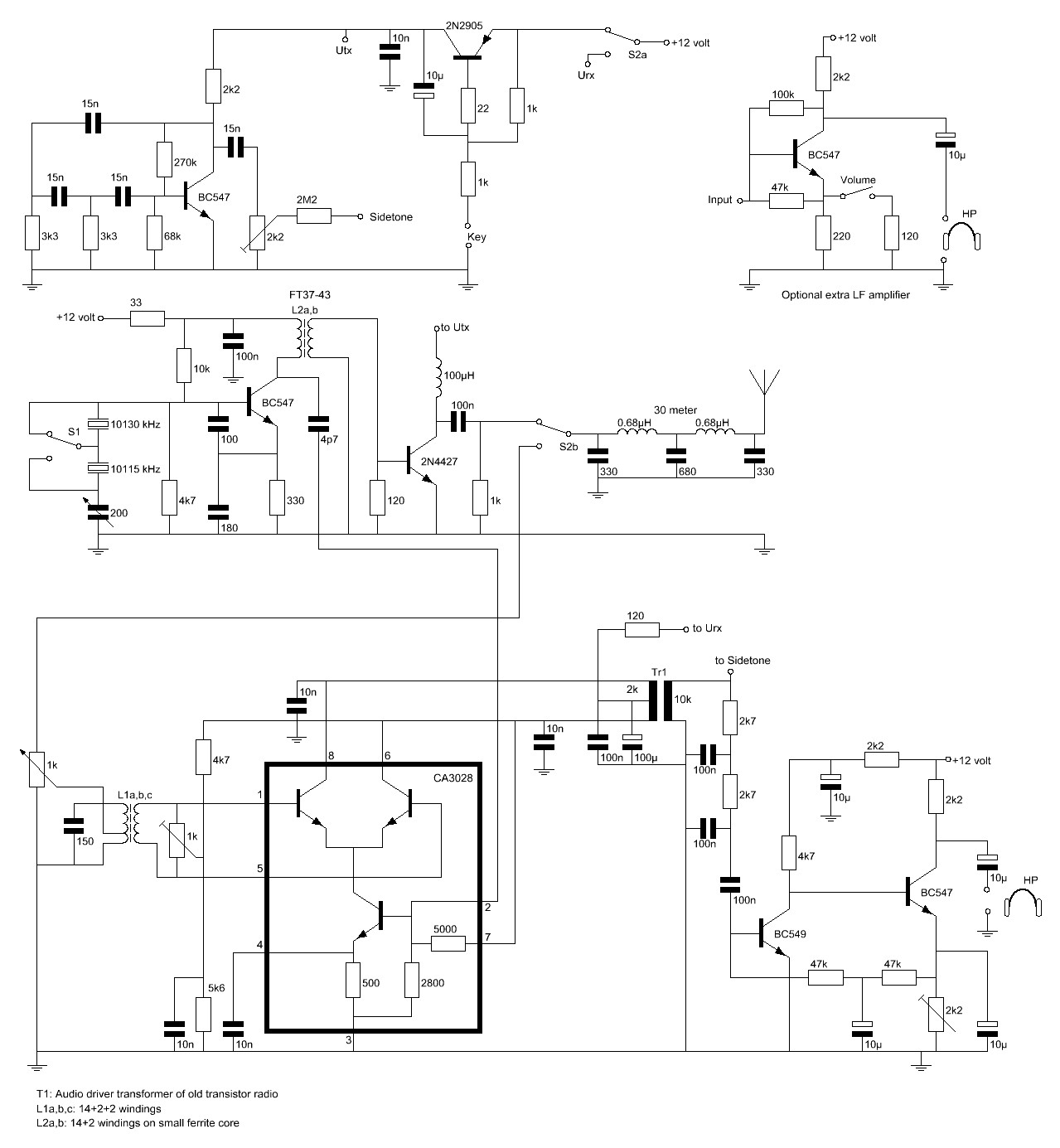
Circuit diagram of the improved version for 30 meter
- The coil L1 has an adjustable core, tune it to 10.125 MHz.
- With the 1k potentiometer, the suppression of the detection of strong AM broadcast stations can be adjusted.
- With the 2k2 potentiometer near the side tone oscillator, the volume of the side tone can be adjusted.
- The other 2k2 potentiometer is the "low battery" indication. Adjust it so that the side tone is not hearable anymore at the lowest supply voltage (8-9 volt).
The audio characteristic is shown on the picture here below. The cut off frequency is quite low, just above 400 Hz, it sounds a little dull. That was also the intention. When you switch from transmit to receive, you have to retune the VXO a little, otherwise your receiver is zero beat with the other station. We want to keep this offset tuning as small as possible. Therefore, the other station will be heard with a low frequency audio tone. Just before the end of the transmission of the other station, we have to tune zero beat to be able to transmit on the exact frequency. If you should forget that, you will be heard most of the time when the offset is small.
But there is another important reason: 400 Hz is not the most sensitive frequency of the ear but indeed the most selective frequency!
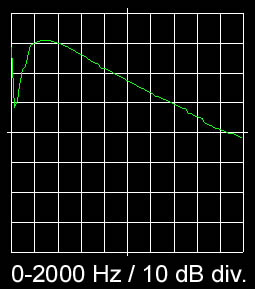
Audio characteristic of the receiver.
As said before, the receiver is designed for high impedance headphones. But I had also good results with a walkman headphone. It is important that you do use a good one, there are many bad ones!
And for the rest I did modify the LF amplifier for unknown reasons and added an extra LF stage. Normally it is not necessary at all, but can be handy when it rains on the tent.

Ice-cold bare feet during a difficult, very challenging one-hour walk on an ice-cold pebble beach.
But that was rewarded with excellent propagation during working barefoot QRP portable!
Index PA2OHH












